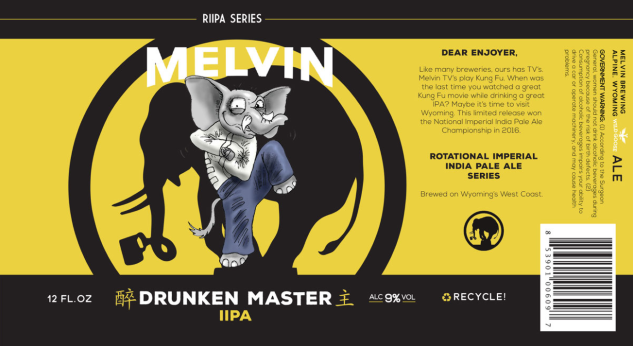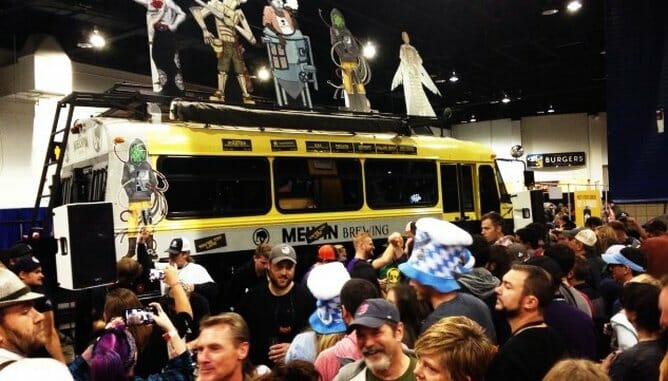
Every year I set foot on the floor of the Great American Beer Festival, the mere idea of assembling some kind of “best beers” list seems like more and more of a fallacy. Even in the course of attending three sessions, one human, possessing a liver of average efficacy in terms of alcohol tolerance, can only make a cursory attempt to “see it all.” Your attempts to “drink the best beers” are about as effective as a child’s attempt to drain the sea with a plastic sand castle bucket.
In that case, then, let us simply celebrate some of the many, many great beers that we managed to encounter this weekend in Denver. At a festival that was bigger and more impressive than ever, Paste drink writers Jim Vorel and Emily Price did their best to take a cross-section of greatness. Keep an eye on Paste Drink in the coming days for more features that came out of interviews conducted at the fest, but in the meantime, we’ll simply leave you with this: These are all beers you should seek out at your earliest convenience.
1. Haymarket Beer Co. – Angry Birds Belgian Rye IPA
“Belgian IPA” has a tough go in the craft beer market, and I can’t exactly disagree with most of the detractors. Put simply, most Belgian IPAs from American craft brewers aren’t exactly inspiring. It’s not too difficult in my mind to pinpoint why—most of them seem to lose track of the “IPA” portion of the proceedings, leaving you with simply an overly bitter, oft-times generic Belgian ale.
Chicago’s Haymarket is one of the very few breweries in the country that makes me want to order a Belgian IPA. This particular beer, a former GABF gold medalist in the “American Belgo Ale” category, gets it right—a complex array of spice and yeast-derived fruit notes, coupled with an assertive charge of citrus/grassy American hops. It doesn’t lose sight of the fact that we’re still looking for hop-driven beers in a Belgian IPA, and I personally can’t help but think that the American hop profile is simply more interest in the style than a Continental one. It’s a far above average example of a style that doesn’t get a lot of attention and interest. – Jim Vorel
2. Three Floyds – Battle of Charro II
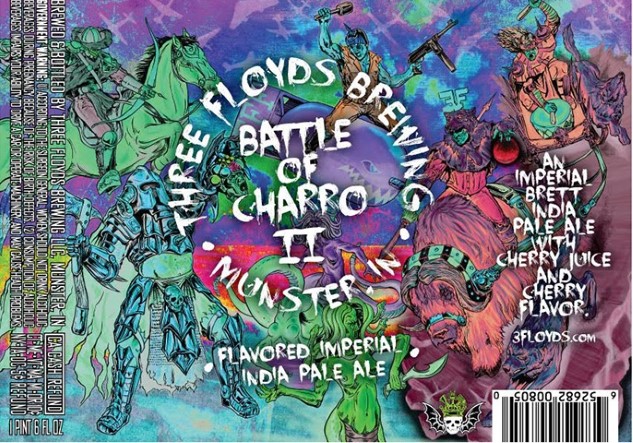
An Imperial Brett IPA with cherries? Admittedly, I wasn’t actually sure 3 Floyds could pull this one off, but they did — and it’s delicious. You get cherry immediately on the nose, almost to a point that you think the beer is going to be a cherry bomb, but it’s not. The cherry juice is in perfect balance with the hops, making for a delicious, slightly-funky beer. – Emily Price
3. The Austin Beer Garden Brewing Co. – Industry Pilsner
If there was one brewery that massively elevated its stature during this year’s GABF, it was almost certainly Austin Beer Garden, the brewer of not one, not two, but three concurrent pilsners. I ask myself: Have I ever gone up to a booth at a festival and found a brewery pouring three different pilsners? And you know what? I can’t think of a single time. In fact, the occurrence (and this wonderful beer) made such an impression on me that I made pilsner into the unofficial theme of this year’s GABF in my eyes: Everywhere I went, I tasted pilsners of all kinds. I had some really wonderful ones from the likes of New York’s Prison City Pub & Brewery, and Denver’s Prost Brewing, but none were as flawless as The ABGB.
Industry is a classical German-style pilsner, and although my knowledge of the regional variations in this style pale in comparison with founder Brian “Swifty” Peters (who I interviewed for an upcoming piece, stay tuned), it has everything I think of, when I imagine the perfect German pils: Crisp, crackery malt and loads of delicate, floral and lightly spicy hops, which contribute moderate bitterness. Like all of the ABGB beers, it’s quite dry, mega drinkable and beyond reproach in a historical sense. All that, and it probably drinks well on a patio, too. – Jim Vorel
4. The Rare Barrel – Hyper Paradise
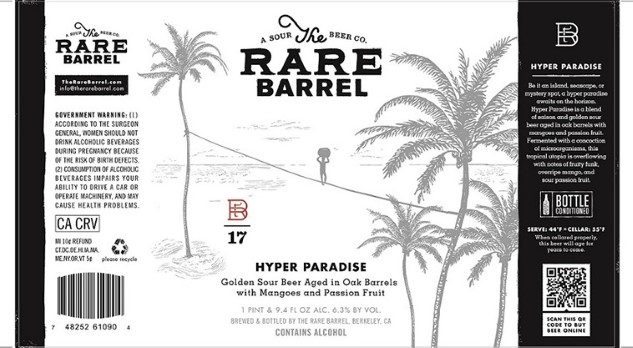
Wait, The Rare Barrel made an amazing fruited sour? Stop the presses, folks! Which is to say, yes, this is the sort of thing you expect from the masters of barrel-aged wild ales at Berkeley, but it’s still nice when you taste a new Rare Barrel beer and your eyes light up in surprise and pleasure.
Hyper Paradise is just an absolute wish-fulfillment kind of beer, a blend of saison and sour golden ale aged in oak with what must have been a truly absurd amount of ripe mango and passionfruit. Its cup runneth over with juicy tropical fruit flavors that are so ripe and authentic that you can practically feel the juice dribbling down your chin. To my palate, the passionfruit comes forward most strongly, with beautiful, fuzzy stone fruit notes that I wish I could re-experience on a daily basis. So vivacious, and so good. – Jim Vorel
5. Fremont- Barrel-Aged Unicorn Tears
I mean, how do you turn down barrel-aged unicorn tears? You don’t. Besides being packaged in a fun bottle, Fremont’s Barrel-Aged Unicorn Tears is also a pretty fun fruited stout. This collaboration between Fremont and Perennial Artisan Ales is an Oatmeal stout aged in bourbon barrels, with added cherries (and unicorn tears). Those tears must give it something special. You get a lot more malt and chocolate notes with this one than you do cherry, but in a good way. The cherry isn’t overpowering, but it’s present and perfectly in balance with the bourbon and malt to make a truly special beer. – Emily Price
6. Beachwood Brewing Co. – 28 Haze Later IPA
I already wrote about this particular NE-IPA back in June, when I praised it as perhaps my favorite hoppy beer from the Firestone Walker Invitational, and nothing has changed. In three sessions of tasting IPA at GABF, I didn’t taste another one I liked more than 28 Haze Later. As I wrote in June:
The holy trinity of Mosaic, Citra and Galaxy lead the way on this wonderfully juicy beer, projecting massive citrus and tropical fruit juice flavors, along with some drying, spicy resin. Like many of the best examples of this style, there’s a not-insignificant residual sweetness and low bitterness, although it may have slightly more balancing bitterness than most. If only everyone trying to replicate NE-IPA could make it this cleanly, and wring this kind of flavor out of their hops.
Which leads us to an elephant in the room, when it comes to GABF medals: It seems crazy to me that the BEST-MADE examples of this style of IPA, such as 28 Haze Later, are not in the conversation for medals in seemingly any category. Sure, there are bad examples of NE-IPA out there, but there has also been industry-wide adoption of this style. It’s not new; it’s been all the rage for several years now. Many brewers don’t like it, and many do, but one thing is for certain—the drinkers love hazy IPA, and all you need to see to know that is to look at the lines of the festival. But as the BJCP regulations currently stand, there’s essentially no reason to enter them into any kind of competition, suggesting that either the current definitions need to be altered or that (more likely) a new category needs to be created. The reality, though, is that if this is what is going to happen, it should already have happened by now—2017 should have been the first GABF with an NE-IPA category. If it isn’t in place by 2018, then even more producers of acclaimed IPA will likely choose to skip the festival, which is the last thing attendees want. In short, the most sought-after beers of the festival should probably have an award category to which they actually belong. – Jim Vorel
7. Speciation Artisan Ales – Incipient (Tequila BA w/ Blood Orange, Pink Guava, Limes, and Salt)
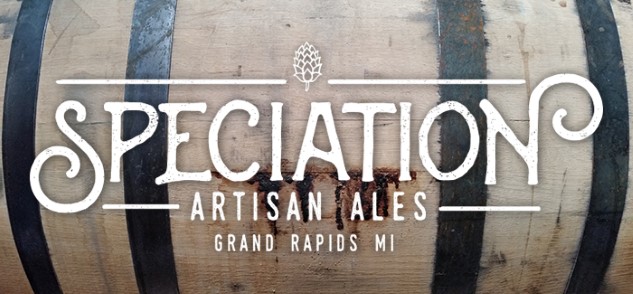
Speciation might have been the most exciting of all the breweries I sampled for the first time at this edition of GABF. These Grand Rapids, MI sour ale producers are doing some incredible things, and it speaks toward the adoption of these styles and techniques—I wasn’t even familiar with Speciation, and they’re turning out beers that the likes of Jester King would be proud to call their own. That’s kind of amazing.
At the festival, they were featuring several version of their golden sour base, Incipient, aged in different combinations of barrels and featuring a variety of exotic ingredients. My favorite, though, was a bit unexpected—I’m not typically drawn to tequila barrel-aged beers, but this one’s barrel character is significantly more subtly integrated than most. Blood orange, pink guava, limes and salt were also added, making what the brewery describes as “a cross between a sour beer, a margarita and a tropical fruit smoothie.” That sizzle reel is no joke: This beer is a beautiful symphony of zingy citrus, herbality, oak and a touch of salinty. It’s an incredibly well-executed concept from start to finish. – Jim Vorel
8. WeldWerks Brewing Co. – Medianoche
NE-IPA may not be getting any love in the form of GABF medals just yet, but WeldWerks is fortunate to make a few more things other than NE-IPA—even though they just did quite well with a hazy IPA in our blind-tasting of 176 of them. Go back to January, though, and they ALSO did very well in our imperial stout tasting, and that’s what we have here: A monstrous bourbon barrel-aged stout, weighing in at 14.2% ABV, which took home the gold medal for barrel-aged stouts.
This beer is truly one that feels huge, in a “larger than life” sort of way. It’s thick as oil, chewy and robust, but it simultaneously skirts the astringency of excessive alcohol or the overwhelming quality of saccharine sweetness. “Richness” is the operative word here, with massive, deep flavors of fudgy cocoa, vanilla bean, oak and molasses cookie. The sumptuous texture reminds me favorably of some of the great barrel-aged stouts from Fremont Brewing Co., and that’s just about the best compliment I can give in this field. Everyone tries to make this style of beer, but few are able to do it on this level. Colorado is fortunate to have young breweries like WeldWerks that are still emerging every few years, pushing its scene forward to new heights. – Jim Vorel
9. WeldWerks – Peach Climacteric
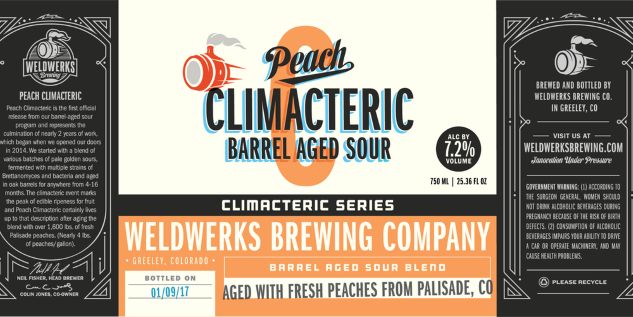
This slightly-funky peach beer from WeldWerks was really impressive. The beer is the first release in WeldWerk’s barrel-aged sour program, and started back when they opened the brewery in 2014. The beer starts with a blend of various batches of pale golden sours that were fermented with multiple strains of Brett and then aged in oak barrels for between 4-16 months. This beer in particular was aged with 1,600 pounds of fresh peaches (4 pounds per gallon), and let’s just say you can tell. – Emily Price
10. Societe Brewing Co. – The Volcanist
But enough about imperial stout! Can we talk about regular ‘ole stout for a minute? I’m talking about “American-style stout,” as defined by the BJCP. You probably remember these types of beers from the heady brewing days of yore: Non-imperial, non-adjunct stouts. If not, let me jog your memory. They were around 5-7% ABV? On the drier side? Aggressively roasty and full of body? More than a touch of American hop balance, but not as much as black IPA? Does anyone but me remember this style of beer?
To look at the entries in the last few years of GABF, you’d think the answer was no. The position of “American stout” has been almost wholly consumed by porter, even though they’re not supposed to be analogous. What’s left are other stout styles that have some similarities, but not all: Milk stouts, oatmeal stouts, and MANY adjunct stouts with coffee, cocoa, fruit, etc. And hell, I like all of those beer styles, but what I really miss are the classical American stouts. And that’s why I enjoy The Volcanist so much.
This beer is a picture perfect example of American stout. Strong, roast-forward malt backbone with touches of caramel and cocoa are met by a kiss of piney American hops, but not nearly so much that you’d ever mistake it for black IPA. It still drinks fairly easily at 6.4% ABV, but it has more bitterness and volume of flavor than your average brewpub robust porter, mostly thanks to the level of roast. Kudos to Societe, better known for IPAs and sours, for keeping this style alive. And an honorable mention to Chicago’s Revolution Brewing, who also make an excellent example of this style called Rise, which goes a bit heavier on the hop character. – Jim Vorel
11. On Tour Brewing Co. – Spectator Doppelbock
I know Chicago’s breweries pretty well, or at least I did, throughout the years that I lived in Illinois, the state of my birth. In the last three years of residing in Atlanta, I’ve been able to sample many of the Chicago breweries that have opened in my absence, but as time goes by it becomes more and more difficult to keep up. Things slip through the cracks. I recognize this, but it doesn’t make me any less shocked when a Chicago brewery I’ve never even heard of wins Very Small Brewing Company of the Year. That’s what just happened with Chicago’s On Tour Brewing Co., so I knew I had to make a beeline for their booth.
This brewery took home two medals in bock and doppelbock, so it’s pretty safe to say that they have that style down pat—and actually pretty impressive in terms of BJCP grading consistency at the same time. Doppelbock has never been a favorite style of mine—I find many of them to be cloying and boozy, all at once, without any kind of proper balance—but On Tour’s version is among the best I’ve ever had. Toasty, chewy malt flavors of brown bread and light honey are prevalent, with hints of sherry-like booziness that don’t detract from what is actually an extremely drinkable beer. I daresay one could get into trouble having too many of these over the course of a particularly frustrating Bears game. It’s single-handedly given me new interest in doppelbock as a style, and I look forward to seeing more representatives of On Tour’s full portfolio, which stretches well outside the malty German lagers that won them their medals. – Jim Vorel
12. Melvin – Drunken Master DIPA
Melvin has proven itself as a master of IPAs, and Drunken Master is no different. The 9.5% ABV Imperial IPA is packed with Citra, Amarillo and Columbus hops. On the nose you get some grapefruit and pine, which sticks with you through that first sip. There’s a nice malt backbone on this one that gives it a great balance and makes it oh so drinkable. – Emily Price
In fact, this whole GABF really felt like it belonged to Melvin on some level. They scored multiple gold medals, won Brewery Group of the Year and garnered a crazy amount of attention on the festival floor by pouring from a hip-hop blasting schoolbus throughout. They even hosted one of GABF’s best afterparties, the kung fu-themed “House of Flying Barrels,” after the Friday night session. Truly, these guys can do it all. – Jim Vorel
13. Bale Breaker Brewing Co. – Topcutter IPA
When you’re aware of the existence of a well-like beer for many years before you ever get a chance to try it, the end result rarely lives up to your expectations. How many of us have been through this exact scenario, hearing about a specific beer for years and then finally trying it, only to find that time and the industry have left it behind? And so, despite the fact that Topcutter has been a well-liked IPA for a long time, I went into tasting it with fairly even expectations.
Those expectations were immediately left behind. This is a superb, brilliantly hoppy IPA, and one of the best examples of the pre-NE-IPA generation of beers present at the entire festival—thanks to the Washington Brewers Guild booth for stocking it! Intensely resinous and citrus-forward, Topcutter attacks the palate with waves of sticky pine and grapefruit/lemon citrus. Hints of juicy sweetness are there, but this is still a dry, refreshing IPA, which is one of the aspects that now differentiate it from the soft and sweet generation of NE-IPAs that are now getting so much attention with fuller bodied, “chewier” beers. This, on the other hand, is devastatingly clean and drinkable—it reminds me of nothing so much as one of our other blind tasting winners, White Rajah IPA from the perpetually underrated The Brew Kettle in Strongsville, OH. It’s a near-perfect “everyday IPA” that I can’t imagine I would ever get tired of drinking. – Jim Vorel
14. Red Rock Brewing Co. – Zwickelbier
As part of my “walk around and try a bunch of pilsners” experiment during this year’s GABF, I also dabbled into a variety of unfiltered lagers, which means kellerbier and zwickelbier. Essentially terms that mean the same thing, they simply imply German-style lagers (some that can double in the pilsner category) with a bit of yeast in suspension, which tends to buff the malt presence and grainy, doughy flavors.
This unfiltered lager from Utah’s Red Rock Brewing is a lovely, perfectly authentic example of a style that I would love to see come into the vogue in American craft brewing. Full of bready, crackery malt and a kiss of floral hops, it’s like that “drinking a slice of bread” experience one often hears attached to beer styles such as bock, except without the overt sweetness the latter would imply. This, rather, is the ultimate food beer or backyard refresher—it’s what you drink after mowing your lawn, alongside a nice dagwood sandwich. Along with the beers from Austin Beer Garden, this Zwickelbier has me thinking more and more about the need for better, more widespread craft lagers in a scene that continues to barrel down the IPA path with reckless abandon. We need beers like this Zwickelbier, and we need them now, before we forget their utility and subtle joys. – Jim Vorel
15. Four Saints Brewing Co. – Hefeweizen

There comes a moment during each and every GABF when I am desperately in search of a comfortably familiar beer style that I need to reset my palate to some kind of baseline of normalcy. Taste too many incredibly funky or tart wild ales, or too many grandiose, hedonistic barrel-aged stouts, and the world stops making sense. That’s when I need a beer like this one from North Carolina’s Four Saints Brewing Co., but at GABF they can sometimes be hard to find. Moreover, not just any hefe or golden ale will do. The trick is finding one that absolutely nails the soul of the style. That’s what this one does.
This hefeweizen is like the platonic ideal of classic German hefeweizens, and I wish we’d had it among the entries the last time we blind-tasted American and German wheat beers. With a perfect balance of banana and clovey esters to complement a medium body of chewy, bready malt and hints of lemon citrus and floral hops, it was exactly the beer I needed in the moment I drank it, and that makes it as memorable to me, after the festival, as any of those barrel-aged imperial stouts. Sometimes, it’s about being exactly the right beer for the job. – Jim Vorel
16. AleSmith – Rye Barrel-Aged Vietnamese Speedway Stout
Wow. I had heard tale of Alesmith’s Rye Barrel-Aged Vietnamese Speedway stout, and it did not disappoint. Bourbon and coffee come together in perfect harmony with this one. You get a little bit of sweetness from this, but not an overwhelming amount. Oatmeal, chocolate, and rye notes stand out, along with an undertone of smoke. Truly a beautiful beer worth seeking out. – Emily Price
17. Two Brothers Brewing Co. – Phenomenomnom
One of the pleasures of GABF is getting yourself reaquainted with the progress made by a brewing program that you haven’t checked in with in a little while. Two Brothers being one of the closest breweries to my hometown, they were once a brewery I knew quite well, but I haven’t had as much from them in recent years, even as they passed their 20th anniversary in the spring. I certainly didn’t know that their sour brewing program had come along to the point of producing something like this beer, and that was a wonderful surprise.
Phenomenomnom (which is a fun name, but difficult to type) was one of the best wild ales I tasted from an unexpected source. Funk forward, with a complex melange of spice and fruit (stone fruit, red berries) notes, it was the sort of thoughtful wild ale that a brewery such as Allagash would have been happy to produce. It was amazing to me to consider that this was a beer from the suburban Chicago brewery I’ve known for so long. It just goes to show how far an older brewery can go, if they apply themselves toward constantly honing their craft and exploring new styles as they emerge. When Two Brothers began in 1997, this style of beer wouldn’t have been on anyone’s radar outside of Belgium. Today, they’re making a world-class example. – Jim Vorel
18. Cascade – Rose City Sour
I’m convinced that Cascade is incapable of making a bad beer. This American Wild Ale has a sour blond base, with added dried rose hips, rose peals, and hibiscus tea and aged in oak barrels up to 14 months. It’s certainly a unique combination of ingredients and flavors, but it works. The rose is there, but isn’t overpowering. Hints of pomegranate and black pepper give it a great balance. – Emily Price
19. Epic Brewing Co. – Son of a Baptist

I drank a whole lot of coffee beers at this year’s GABF. Some were very intriguing, such as the unusual (and medal-winning) 8 O’Clock Somewhere from Atlanta’s Torched Hop Brewing Co., which is a cream ale spiked with coffee and lactose to make something akin to a blonde latte. But my favorite was this offering from Utah (and Denver’s) Epic, which manages to take one of the best barrel-aged imperial stouts out there and condense it down into a slightly more manageable package. It’s an interesting feat of miniaturization.
Granted, Son of a Baptist is still 8% ABV, but it’s not barrel-aged like its father Big Bad Baptist, and more focus is put on the purity of the coffee essence captured in each bottle. The brewery teamed with a bevy of “creative and innovative roasters” nationwide to find which varietals of coffee they were most interested in, and each batch of Son of a Baptist reflects these nuances. If you’re the kind of coffee consumer who enjoys single varietal pour-overs (as I admit to occasionally being), this is exactly the kind of experiment that should get you salivating. – Jim Vorel
20. Black Bottle Brewery – The Last Unicorn
Fort Collins’ Black Bottle Brewery is a good brewery in a town full of good breweries, so it likely flies a little under the radar at times. However, I have to give props to The Last Unicorn, this particularly tasty lambic-style beer, brewed with a combo of cherry and raspberry. It sort of does beg the question: Given that cherry and raspberry are two of the most common (and classical) fruits for sour beer styles, why is it that more breweries don’t combine the two in wild ales/fruited sours? Is there a perception that they don’t work well in conjunction? That cherry and raspberry are each, individually too assertive to get along? I’m not sure, but in this beer the combination works wonderfully.
The level of tartness is dialed in wonderfully, with a lightly puckering initial shock of sourness that gives way to funky complexity. Bright cherry and raspberry take turns in the lead, delivering no shortage of juicy red fruit flavors. The intensity of fruit flavor is in perfect balance with the moderate tartness—the whole thing just sings as one. As previously mentioned, this was another theme of GABF for me—the discovery of world-class wild ales being produced by more and more breweries in various regions. It’s about time we open our perception as drinkers to the idea that an awesome sour can come from just about anywhere in 2017. You never know where you’re going to find the next great one. – Jim Vorel
Jim Vorel is a Paste staff writer and resident beer guru. You can follow him on Twitter.
